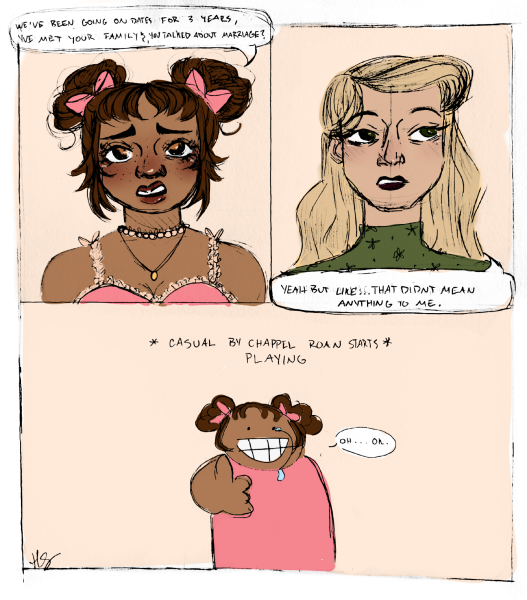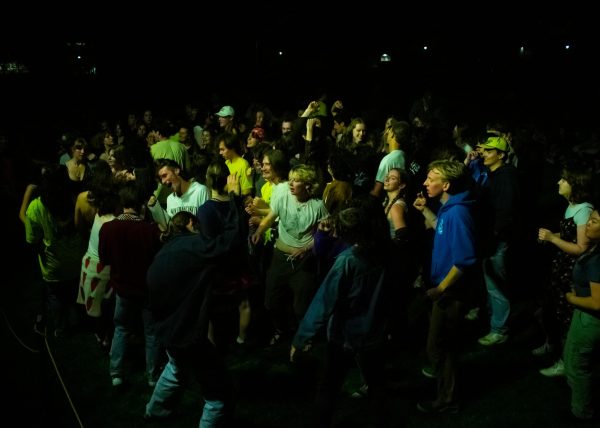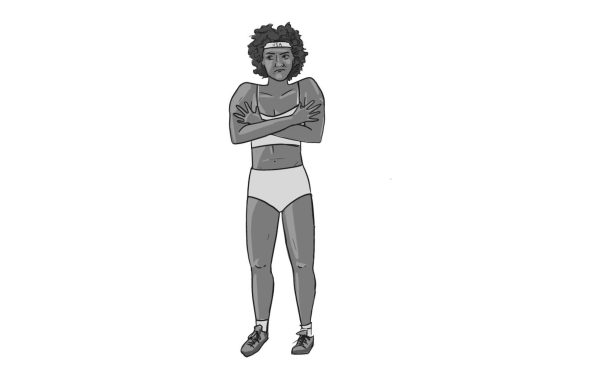Whitman Receives Red Code Rating for Policies that Inhibit Free Speech
April 3, 2019
The Foundation for Individual Rights in Education (FIRE) assigned Whitman College a red speech code rating for its policies that “clearly and substantially restrict freedoms of speech.” A red speech code rating is the lowest possible rating, out of green, yellow, and red.
FIRE is a non-profit educational foundation based in Philadelphia that rates freedom of speech at colleges around the U.S. and pursues cases against colleges for breaches of those freedoms.
FIRE rated Whitman College’s freedom of speech status as red because of four different problematic policies, according to Senior Program Officer of Policy Reform at FIRE, Laura Beltz.
Three of these policies are contained within the Student Handbook (Whitman College Grievance Policy—Sexual Harassment, Student Rights and Responsibilities—Other Prohibited Conduct, and Student Rights and Responsibilities—Information Technology Policies); Whitman was also assessed in the additional category of Bias Reporting and Response. Each policy has a rating of its own. Whitman College Grievance Policy—Sexual Harassment has a red rating, and the remaining policies have yellow ratings.
The red rating for the Grievance Policy is due to broad examples used in the policy, according to Beltz.
“Under the standard for student-on-student (or peer) harassment provided by the Supreme Court, alleged harassment must be conduct that is ‘so severe, pervasive, and objectively offensive, and that so undermines and detracts from the victims’ educational experience, that the victim-students are effectively denied equal access to an institution’s resources and opportunities’,” Beltz said in an email to The Wire. “Whitman’s definition of sexual harassment reasonably tracks this standard, as it makes punishable conduct that is sufficiently severe, persistent, or pervasive such that it unreasonably interferes with an individual’s ability to participate in college opportunities.”
Beltz believes that while the definition is acceptable, the following verbiage contains problematic wording.
“However, after providing this good definition, the policy later says ‘further examples include’ things like ‘[unwelcome] statements,’ ‘jokes,’ and ‘stereotyping’,” Beltz said. “These examples could certainly be a part of a pattern of conduct that does meet the Supreme Court’s harassment standard, but are typically protected under First Amendment standards when standing alone. By saying these items are all examples of harassment, students reading the policy may think each example, like a single off-color joke, is indeed punishable on its own, and may self-censor their speech in order to avoid punishment.”
Bias Reporting and Response has a yellow rating due to Whitman College’s policy that defines bias incidents as those that “cause hurt or discomfort based on individual characteristics such as race, gender, religion or sexual orientation” as well as blurry policy on mandatory educational programs for bias incidents.
“Speech that hurts or discomforts individuals based on particular characteristics could be included in speech or conduct that isn’t protected by the First Amendment, like harassment, but a great deal of speech that hurts others is protected under First Amendment standards,” Beltz said.
FIRE rated stipulations in the Student Rights and Responsibilities—Other Prohibited Conduct policy in the Student Handbook yellow because “they ban overbroad categories of speech like ‘lewd’ or ‘indecent’ expression, and ‘abuse,’” according to Beltz.
“Lewd and indecent conduct, like indecent exposure, can be reasonably regulated by the college consistent with First Amendment standards, but banning lewd and indecent expression includes speech that is constitutionally protected, like an off-color joke,” Beltz said. “And although abusive speech could refer to unlawful conduct like harassment, it could also include harshly worded speech that is nonetheless fully protected speech.”
Junior Cameron Conner believes in freedom of speech, but thinks that the red light rating is unnecessary.
“These policies do not ban language, but ensure that potentially harmful acts will be followed up on and dealt with according to their impact on others,” Conner said in an email to The Wire. “Ultimately, I believe that speech on college campuses should be regulated as lightly as possible, but I don’t believe that Whitman’s current policies warrant a ‘red light rating.’ These policies do not restrict speech, but rather promote equitable speech. I see no policy that would completely shut off conversation, only deter the existence of a harmful and threatening environment.”
The last yellow-rated policy is in the Student Rights and Responsibilities—Information Technology Policies (also within the Student Handbook), owing to the broad definitions of the words “abuse” and “sexually suggestive materials.”
“Verbal abuse is a broad term that can too easily be applied to restrict speech that is protected under First Amendment standards,” Beltz said. “Further, though displaying sexually suggestive materials could constitute sexual harassment if a part of a pattern of conduct that does meet the Supreme Court’s standard for peer harassment in the educational setting, the display of sexually suggestive material could include material as innocuous and constitutionally protected as art with nude imagery.”
Provost and Dean of the Faculty Alzada Tipton believes that Whitman’s policies try to encourage free speech by creating a community in which a diverse array of people can speak.
“Whitman College as an institution sees freedom of speech as a bedrock principle of what we do here,” Tipton said in an email to The Wire. “Difficult and uncomfortable conversations happen on this campus every day and we do not shy away from those conversations. However, as a community, we also have expectations regarding how we treat each other when we are talking about difficult issues. It’s not in any way an attempt to inhibit free speech, but rather create a community in which the widest variety of voices possible are heard.”










Dylan Carlson • Apr 9, 2019 at 11:03 pm
The fact that Whitman’s policies have been “red-carded” by a Koch-brothers funded right wing think tank should be a source of pride for students and alumni alike.
From 2008-2014 this Republican-leaning think tank has received $955,561 from the Charles G. Koch Foundation.